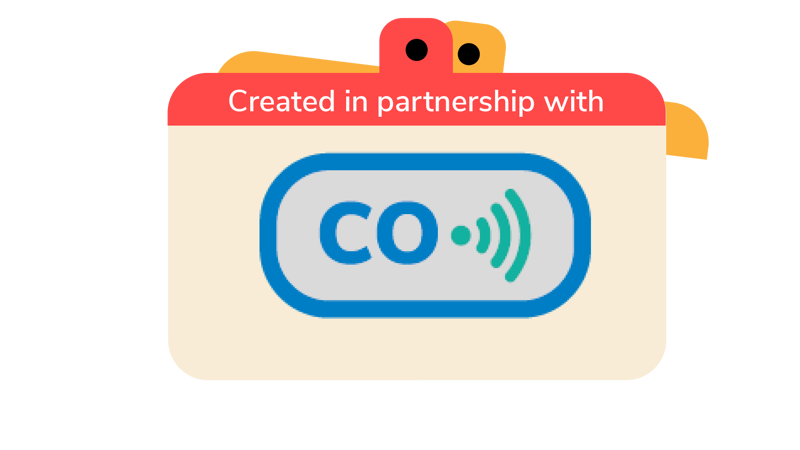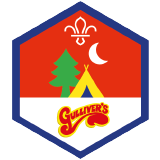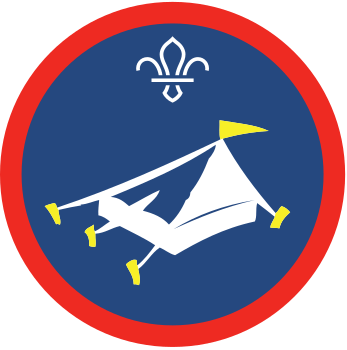
Dutch oven enchiladas
You’ll need
- Hot embers and coals
- Dutch Oven (or equivalent fireproof casserole dish with lid)
- Campfire grill or equivalent
- Ingredients (see recipe card)
- Can opener
- Ladle
- Kitchen tongs
- PPE (protective equipment), such as heatproof gloves
- Bucket of sand and/or water
- First aid kit for burns
- Bowl
- Spoons
- Plates
- Carbon monoxide alarm
Dutch ovens
Dutch ovens are usually made of seasoned cast iron. However, some Dutch ovens are instead made of cast aluminium, or ceramic. They’re often called casserole dishes in the UK.
They’ve thick walls and a tight-fitting lid. They’re great for cooking stews, sauces, soups, casseroles and braises.
Before you begin
- Use the safety checklist to help you plan and risk assess your activity. Additional help to carry out your risk assessment, including examples can be found here. Don’t forget to make sure all young people and adults involved in the activity know how to take part safely.
- Enchiladas are a traditional Mexican dish. You could make this recipe as part of Day of the Dead celebrations, the Mexican holiday celebrating life, between the 1 November and 2 November. You may want to find out more information about the Day of the Dead festival before running this activity. We've shared some information on this page.
Building a fire and preparing to cook on a campfire
- This recipe is designed to be cooked in a Dutch Oven on top of hot coals.
- Build and light a fire before starting this activity. Our activities, Campfire admirers or Construct a campfire, can help you to do this. You’ll use the hot embers to cook on, so the fire will need enough time to die down before cooking.
- You could run our fire safety activities, Fuel air ignition and Sitting safely by a campfire, prior to running this session.
- Remember to have a hand washing station and take extra hygiene precautions when handling raw meat, such as regular hand washing, having separate equipment for raw and cooked meat, and washing up equipment as soon as it's been used. Take a look at our guidance on food preparation.
- Make sure you have all the ingredients ready. To prepare your ingredients, you’ll need chopping boards, knives, a garlic press or alternative, and a cheese grater.
- Remember to check your ingredients against any allergy or dietary requirements to ensure everyone can enjoy the recipe. This may mean using alternative ingredients.
- Once the fire has burned to hot embers and coals, it is hot enough for you to cook your dish on.
- Remember to have protective equipment to move the Dutch Oven, such as heatproof gloves, available. The entire surface area of the Dutch Oven will be extremely hot.
Having a safe cooking source
- Make sure that everyone’s fires have been built outdoors in clear, open areas, with plenty of ventilation, and away from any areas where people will be sleeping.
- All the fires need to burn down to hot embers before they can start cooking. This increases the chance of the fuel burning without enough oxygen present, increasing the risk of carbon monoxide exposure. We have more guidance on different cooking methods.
- If using a gas stove, make sure it’s on a stable heatproof surface and in a clear and open area, with plenty of ventilation.
Getting ready to cook
- Gather everyone together in a circle and tell them you’re going to make Enchiladas.
- You may want to run a fire safety talk or show people how to use the equipment safely, such as for cooking on a campfire or chopping ingredients.
Consider using this script to teach young people about carbon monoxide and how to keep themselves safe when burning fuel.
Does anyone know the three things we need to ignite or sustain a fire?
We need oxygen, a heat source (this can be a match, lighter, electricity or flint and steel) and fuel (this can be wood, gas, or solid fuel). This is known as the fire, or combustion triangle. When these three things come together, a chemical reaction happens and that is how we get fire.
What would happen if we removed the heat source from this triangle?
With just oxygen and fuel, nothing would happen.
What would happen if we removed the fuel from this triangle?
With just oxygen and a heat source, nothing would happen.
What would happen if we removed the oxygen from this triangle?
When there is not enough oxygen available for the fuel to burn fully when introduced to a heat source, carbon monoxide is released.
Does anyone know what carbon monoxide looks like?
It is actually colourless, odourless and tasteless – so we can’t sense it at all.
How do you know if you, or someone else might have carbon monoxide poisoning?
The symptoms of carbon monoxide poisoning might be confused with ‘flu-like’ symptoms. This could be headaches, dizziness, feeling weak, vomiting, chest pain, and confusion.
Safe or unsafe?
Gather everyone together and explain that you will be reading out statements. It is up to your young people to decide if the statements are safe or unsafe. They can do this by a show of hands, or marking areas on the floor for people to stand in. Make sure you play this away from any fires, in a safe area.
I’m going to cook for my troop. It’s raining so I’m going to cook in a gazebo with the sides removed for ventilation.
SAFE – Cooking in an environment where there is plenty of oxygen is vital to making sure no carbon monoxide is released.
The rain is getting heavier, and everyone is feeling cold. I’m moving my stove into the tent to finish cooking.
UNSAFE – Cooking in small and poorly ventilated spaces increases the likelihood of carbon monoxide being released. Cooking in the same place where people sleep puts people at risk of being poisoned while unconscious. Stay warm when camping by wrapping up, bringing a warm sleeping bag and having plenty of warm, dry layers of clothing.
Dutch oven enchilada recipe
Ingredients:
- 4 – 6 tortillas
- Cooking oil
- ½ red onion (sliced or diced)
- 1 pepper (sliced)
- 4 cloves of garlic (minced/crushed)
- Can of black beans
- Cheese (grated)*
- Enchilada sauce
- Cumin or other spices (one tablespoon)
- Salt (optional)
- Toppings (optional)**
*You could use mature cheddar for a strong cheesy flavour, or add an Italian influence to the mix, with mozzarella, which melts really nicely.
**You could try some sour cream or sliced avocado, which is great for cooling your mouth down if you’ve made your Enchiladas spicy. You could add a squeeze of fresh lime, or some sliced jalapeno peppers for a real spicy kick!
Prep time: 5 – 15 minutes
Cook time: 15 – 30 minutes
Makes: 4 – 6 Enchiladas
Cook your filling
- Everyone could be split into small groups.
- Each group, if they’re not already prepared, needs to slice the onion and pepper. Crush or mince the garlic and then grate the cheese.
- Add a little cooking oil in your Dutch Oven, about two tablespoons will do, and allow it to heat up.
- Add the sliced pepper and cook for a few mins until the pepper starts to soften.
- Add the sliced/diced onions, then cook until both the onions and the pepper are soft.
- Add the garlic, spices and a little salt, if wanted.
- Let the mixture cook for about 30 seconds.
- An adult should carefully remove your Dutch Oven from the heat, remembering to wear the heatproof gloves. They should place it down on a heatproof surface in a safe place, away from young people, and allow it to cool.
Build your enchiladas
- Gather everyone in a circle, while the Dutch Ovens cool.
- Once cooled use a ladle to transfer your Enchilada mix from the Dutch Oven into a big, clean bowl.
- Tell everyone that as a group, they’re going to build their Enchiladas. They may want to make one each, or work as a team and each do a different job, just like in a production line.
- Lay out your tortilla on a clean surface, such as a plate.
- Use a spoon to place some Enchilada mix in a rough line in the middle of a tortilla.
- Add some black beans, then top with some grated cheese. When you’re building your enchiladas, make sure to keep some cheese to add on top of your Enchiladas later, too.
- Gently roll your tortilla up, making sure the fillings are wrapped tightly inside the tortilla.
Cook your enchiladas
- When your group have built all your Enchiladas, it’s time to finish them off in the Dutch oven.
- As the Dutch Oven is still warm, an adult should help with these steps.
- Use a wooden spoon to add some Enchilada sauce to coat the bottom of your Dutch Oven. However, make sure you save enough to pour over the Enchiladas later.
- Carefully place your Enchiladas into the Dutch Oven, on top of the sauce.
- Cover the Enchiladas with the rest of your sauce and cheese.
- Pop the lid back onto your Dutch Oven
- With adult help, carefully place your Dutch Oven on your campfire grill, above your campfire embers, so it’s getting indirect heat.
- Using heatproof gloves, an adult should place around fifteen coals on top of the lid.
- Leave to cook for around 10 minutes, until the cheese is melted.
- An adult should carefully remove your Dutch Oven from the heat, remembering to wear the heatproof gloves. They should place it down on a heatproof surface in a safe place, away from young people, and allow it to cool.
- Once cooled, carefully take your Enchiladas out of your Dutch oven use utensils and put them on a plate. Divide them up into bowls or onto plates for your group to try.
- Everyone can add any toppings if they’d like them, then make sure the Enchiladas have cooled down before you tuck in. Enjoy!
What is Day of the Dead?
Day of the Dead is also known as Dia de los Muertos. It’s a lively, colourful two-day festival, which celebrates life. It’s a time when people remember and celebrate the lives of loved ones who’ve passed away. The Disney film Coco is based around the tradition of the Day of the Dead and represents the Mexican customs of this day.
Who celebrates Day of the Dead?
Day of the Dead is usually celebrated in Latin American communities across the world and particularly in Mexico, which is where the festival began. However, it has become more widely popular, so is celebrated by lots of people, such as in schools.
When is Day of the Dead?
The festival takes place every year and normally lasts from the 1 November to the 2 November.
What’s Day of the Dead all about?
On the Day of the Dead, people remember friends and family members who’ve died. They celebrate their lives. The festival’s based on the belief that the dead would be insulted by our mourning and sadness. Many people believe that the dead are allowed to return to Earth at this time. The dead become part of the community and take part in the celebrations with their loved ones.
How do people celebrate?
Family and friends come together to join in the celebrations. Huge lively street parties are held, with food and drink, music and dancing. There are big colourful parades, with huge sculptures, such as mythical creatures. People enjoy dressing up. They might also paint their faces to look like skulls. People will take time to remember and share memories of their loved ones. They might look at pictures of them or visit their graves.
What are the symbols of the festival?
The most familiar symbols of the festival are probably the colourful Calacas (pronounced ‘ka-la-kaz’) and Calaveras (pronounced ‘ka-la-vair-az’). These are decorative figures of skeletons and skulls, which are seen throughout the celebration.
Reflection
A campfire isn’t just for cooking. People have always made fires to ward off predators, keep us warm, illuminate an area and attract attention. Now that we have electric and gas stoves that we can take on camp, why might we still need a campfire?
Is it just the novelty of sharing something with the rest of the group, or is it the social aspect of having somewhere communal to sit with your fellow campers? How did it feel working in groups around the fires, performing your roles and combining your skills to complete the tasks?
Everyone needed to be responsible and safe around the fire. There are lots of risks and hazards that we must be mindful of when enjoying our fire and using it for cooking. Can anyone spot the different ways we have tried to keep everyone safe? Has anyone heard of carbon monoxide? What have we done today to make sure we don't suffer from carbon monoxide exposure?
What did you learn about Day of the Dead? Has anyone heard of it before? Why do you think this might be an important celebration? How can we remember people we know who might have passed away?
Safety
All activities must be safely managed. You must complete a thorough risk assessment and take appropriate steps to reduce risk. Use the safety checklist to help you plan and risk assess your activity. Always get approval for the activity, and have suitable supervision and an InTouch process.
- Cooking
Teach young people how to use cooking equipment safely. Supervise them appropriately throughout. Make sure it’s safe to use and follow manufacturers’ guidelines for use.
- Food
Remember to check for allergies, eating problems, fasting or dietary requirements and adjust the recipe as needed. Make sure you’ve suitable areas for storing and preparing food and avoid cross contamination of different foods. Take a look at our guidance on food safety and hygiene.
- Fires and stoves
Make sure anyone using fires and stoves is doing so safely. Check that the equipment and area are suitable and have plenty of ventilation. Follow the gas safety guidance. Have a safe way to extinguish the fire in an emergency.
- Flammable items
Always take care when using flammable items, especially if you’re near fire. Always follow the manufacturer’s instructions and guidelines.
- Outdoor activities
You must have permission to use the location. Always check the weather forecast, and inform parents and carers of any change in venue.
- Visits away from your meeting place
Complete a thorough risk assessment and include hazards, such as roads, woodland, plants, animals, and bodies of water (for example, rivers, ponds, lakes, and seas). You’ll probably need more adult helpers than usual. Your risk assessment should include how many adults you need. The young people to adult ratios are a minimum requirement. When you do your risk assessment, you might decide that you need more adults than the ratio specifies. Think about extra equipment that you may need to take with you, such as high visibility clothing, a first aid kit, water, and waterproofs. Throughout the activity, watch out for changes in the weather and do regular headcounts.
- Sharp objects
Teach young people how to use sharp objects safely. Supervise them appropriately throughout. Store all sharp objects securely, out of the reach of young people.
To make it easier, or if you’ll be short on time, you could cook your onion and pepper mixture before the session. Then, in the session, you can get straight on with building your Enchiladas.
For an extra challenge, people could make their own Enchilada sauce, rather than buying this ready-made.
Remember to check your ingredients against any allergy or dietary requirements to make sure everyone can enjoy the recipe. You can get gluten free tortillas, made with gluten free flours, such as cornflour. They can be harder to roll without breaking, but warming them up first can help. You can get lactose-free cheeses, or plant-based alternatives, too.
There are lots of different jobs that need doing when planning, making and cooking on a campfire. There’s a role for everyone, so encourage everyone to be involved in a way that works for them. If anyone needs help or struggles with fine motor skills, such as when chopping, give them the opportunity to work in pairs, with a young leader or an adult volunteer.
Day of the Dead is about celebrating loved ones who’ve passed away. Make sure to let parents and carers know that this will be being celebrating, in case anyone is still grieving loved ones or may find it harder to talk about death. You could also remove this element from the activity to make sure everyone feels comfortable joining in.
All Scout activities should be inclusive and accessible.
Consider running this as part of a full dinner cooked over a campfire. We have lots more recipes to inspire you.
Everyone was reminded of the dangers of carbon monoxide poisoning at the start of this activity. Consider combining this with some other activities on carbon monoxide safety.
This recipe is very adaptable. Young people can choose what fillings and toppings they want to use in their enchiladas. Make sure your young people are given appropriate space to learn how to cook using a Dutch oven.






